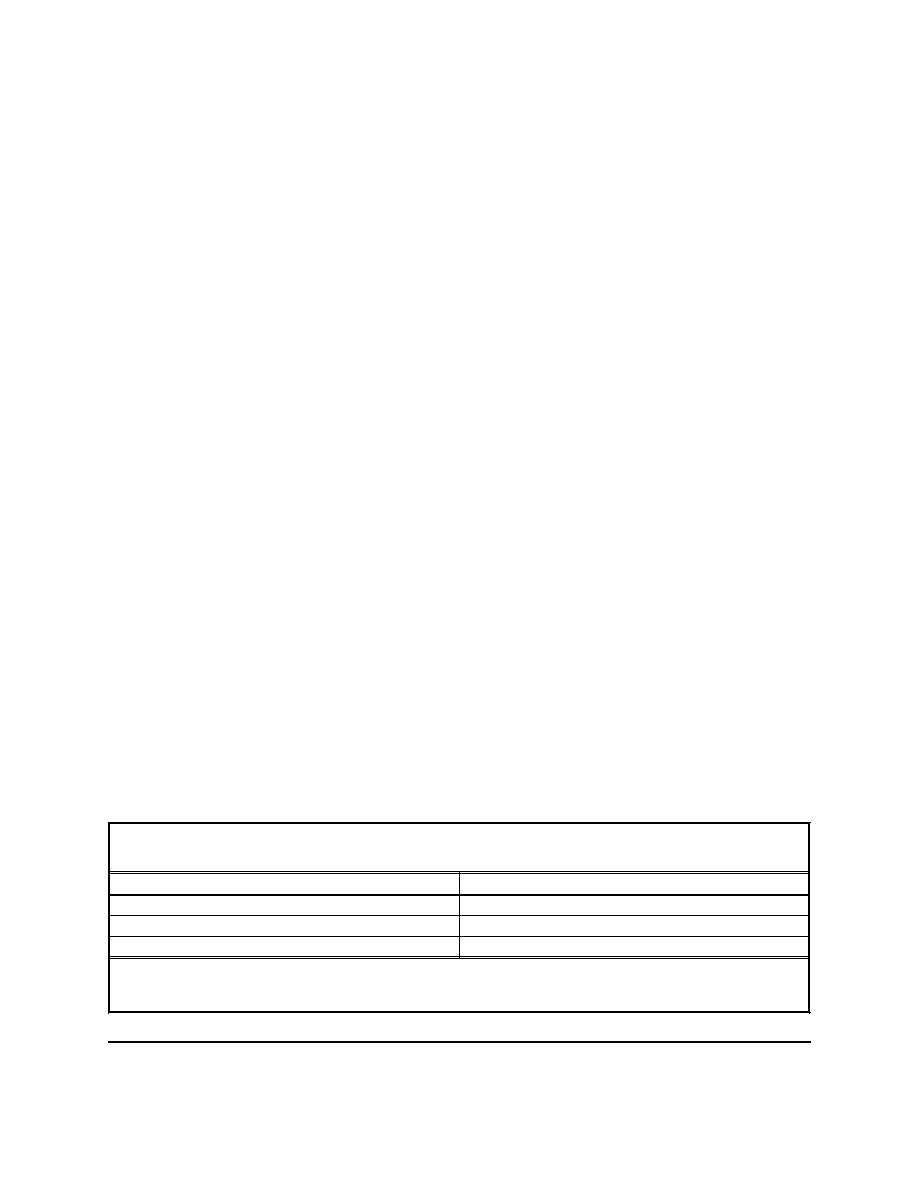 |
||
|
|
||
|
Page Title:
Table 1. CDF Construction/Expansion Cost Estimates for Great Lakes Area |
||
| |||||||||||||||
|
|
 ERDC TN-DOER-C27
July 2002
the initial disposal volume for hydraulically placed sediments versus disposal volume requirements
for mechanically dewatered sediments.
The necessary volume and cost comparisons will be site specific depending upon excavation method
(mechanical or hydraulic), use of separation for BU material recovery, and dewatering method
employed.
DESIGN VALUES: Some cost information is available for the following cost components. These
would form the basis of a detailed economic analysis, applying the unit costs to the relative volume
estimates as developed in the preceding section.
CDF construction.
Dredging.
Excavation.
Separation/dewatering.
Offsite transportation and disposal.
The cost ranges reported in this document are intended to serve primarily to provide a frame of
reference in the cost evaluation process. It is incumbent upon the planner to obtain site-specific
cost information for detailed decision level planning and economic analysis.
CDF Construction. Reported CDF construction costs for the Great Lakes area were obtained
and updated1 (Table 1). The complete listing is included as Appendix B. The least costly alternative
for expanding CDF capacity is typically to raise the dikes of an existing facility. Lateral expansion
of an existing CDF is likely the next least cost alternative, provided space is available and public
and environmental issues do not preclude construction. New CDF construction is expected to be
the most expensive alternative. Note that the estimated $20-$50/cubic yard new construction cost
may be comparable to that of transporting to and disposal at a commercial landfill, depending upon
the nature of the material (whether covered by the Toxic Substances Control Act (TSCA) or not)
and transportation costs. However, for a landfill to be a viable alternative to CDF disposal, the
landfill must be suitably permitted to accept the material and have the necessary capacity.
Table 1
CDF Construction/Expansion Cost Estimates for Great Lakes Area
Alternative
Unit Cost
Raise dikes of existing facility
Typically<$2/cubic yard capacity added
Lateral expansion of existing facility
$5-$10/cubic yard
New CDF/New site
Estimated at $20-$50/cubic yard*
* Costs as high as $86-$195/cubic yard were estimated for construction of a new shoreline CDF to receive
sediments from a Superfund site in the northeast United States, where foundation materials would first have to be
excavated and replaced with competent fill (Personal communication, Rose Schmidt, 10 Dec 2001).
1
Personal communication, Jan Miller, USACE, July 24, 2000.
13
|
|
Privacy Statement - Press Release - Copyright Information. - Contact Us - Support Integrated Publishing |